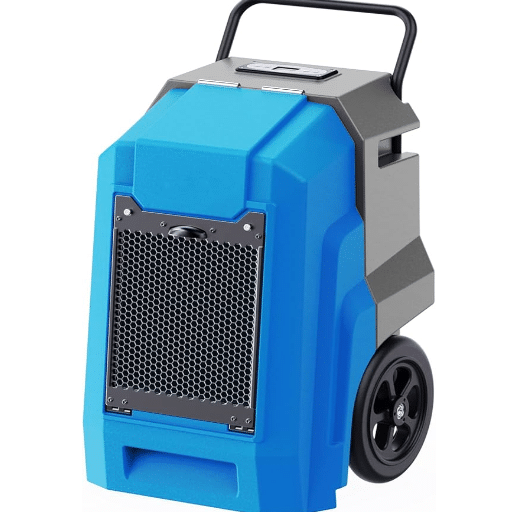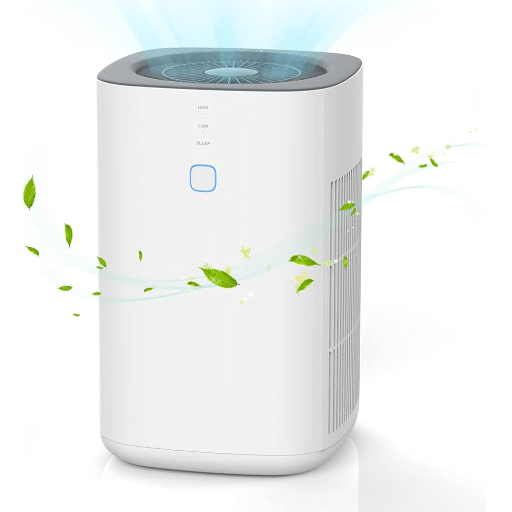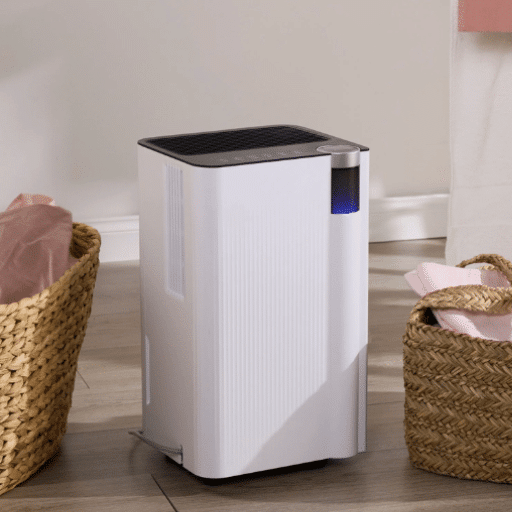Maintaining the perfect balance of moisture in your bathroom can be a challenge, especially in humid climates or poorly ventilated spaces. Excess moisture can lead to mold, mildew, and unpleasant odors—issues that not only affect your home’s cleanliness but can also impact your health. This is where a portable dehumidifier becomes a game-changer. Whether you’re dealing with persistent dampness or just want to create a fresher, more comfortable environment, finding the right dehumidifier for your bathroom is essential. In this article, we’ll explore the top portable options on the market, detailing their unique features, benefits, and why they stand out, helping you make an informed decision for a drier, healthier space.
What is a portable dehumidifier and how does it work?
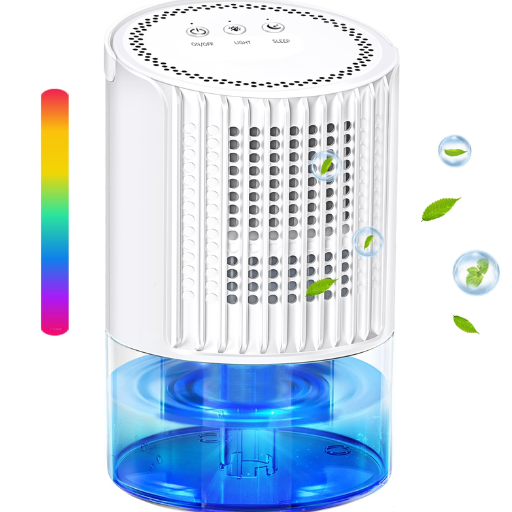
A portable dehumidifier is a compact device designed to reduce moisture levels in the air, making it ideal for managing humidity in small spaces like bathrooms. It works by drawing in humid air and passing it over a cooling coil, which causes the moisture in the air to condense into water droplets. These droplets are collected in a built-in tank or directed through a drainage system. The device then releases the drier air back into the room, creating a more comfortable and healthier environment by preventing issues like mold, mildew, and unpleasant odors.
Understanding the function of a bathroom dehumidifier
A bathroom dehumidifier offers numerous advantages by improving air quality and maintaining optimal humidity levels. High humidity can lead to various issues, including mold growth, which thrives in damp environments, and can cause structural damage and potential health problems such as allergies or respiratory issues. By consistently reducing excess moisture, dehumidifiers play a crucial role in preventing such complications.
Modern bathroom dehumidifiers are designed for efficiency and convenience. Many devices are equipped with adjustable humidity settings, allowing users to maintain an ideal relative humidity level, typically between 30% and 50%, as recommended by experts. They also consume minimal electricity, with smaller units averaging around 200 to 300 watts per hour for continuous operation. Advanced models often include features like auto-shutoff when the tank is full, an energy-saving mode, and digital displays for precise control.
According to recent findings, indoor humidity levels exceeding 60% can significantly accelerate the development of mildew and mold colonies. A bathroom dehumidifier with a capacity of handling 20 to 30 pints of moisture per day is often sufficient for most average-sized bathrooms, ensuring continuous airflow and a dry, comfortable environment. Additionally, these appliances can help protect mirrors, walls, and paint from moisture damage, prolonging the lifespan of interior finishes.
For households in regions with high humidity or for homes without proper ventilation systems, a bathroom dehumidifier becomes not just a luxury but a necessity. It’s an effective solution to foster a healthier indoor environment while reducing long-term maintenance costs.
How does a dehumidifier for bathroom remove moisture?
A bathroom dehumidifier operates by extracting excess moisture from the air, helping maintain an optimal humidity level. The process begins when the unit pulls in humid air through an intake vent. Inside, the air passes over cooling coils, which lower the temperature of the air so that the moisture condenses into water droplets. These water droplets are then collected in a storage tank or directed out through a drain hose for disposal. The now dehumidified air is reheated and released back into the room, creating a more balanced and comfortable environment.
Modern dehumidifiers come equipped with advanced technology to enhance efficiency and effectiveness. For instance, many models feature hygrometers that monitor humidity levels and adjust operation automatically to maintain ideal levels, often around 30-50% relative humidity. Data suggests that maintaining this range significantly reduces the chances of mold growth, which can thrive at humidity levels above 60%. Some high-performance units are capable of removing up to 50 pints (over 23 liters) of water per day, depending on the bathroom size and conditions.
Additionally, energy-efficient models employ compressors or desiccant technology to reduce electricity consumption while still performing effectively. Many designs also include HEPA filters, which not only remove moisture but also improve air quality by trapping particles like dust and allergens. This dual functionality makes dehumidifiers an essential appliance for safeguarding both the structural integrity of your bathroom and the health of its occupants.
The role of humidity level in moisture removal
Humidity levels play a crucial role in determining the efficiency of moisture removal within any indoor space, particularly in bathrooms where humidity often peaks due to frequent water usage. A relative humidity (RH) level of 30-50% is generally recommended for maintaining optimal indoor air quality. When RH levels exceed 60%, conditions become favorable for mold growth, condensation, and structural damage, necessitating effective dehumidification.
High humidity levels directly influence how much moisture needs to be extracted from the air. For instance, at 80% RH, the air holds significantly more water vapor compared to 50% RH, requiring a dehumidifier to work harder and longer to maintain a balanced environment. Upgraded dehumidifiers equipped with advanced hygrometers can monitor these levels dynamically, optimizing their operation to remove excess moisture without over-drying the air. Studies have also shown that maintaining proper humidity can reduce energy costs, as lower humidity places less strain on cooling systems, especially in warmer climates.
Additionally, addressing extreme humidity not only preserves the structural integrity of your home but also contributes to health benefits. Reduced moisture levels lower the chances of allergen proliferation, such as dust mites and mold spores, which are known to thrive in humid conditions. Dehumidification systems tailored to specific RH targets ensure precision control and better long-term results in combating excessive indoor moisture.
How to choose the best dehumidifier for a small bathroom?

- Consider Size and Capacity
Select a compact dehumidifier designed for small spaces. A unit with a capacity of 20-30 pints per day is typically sufficient for a small bathroom.
- Check Moisture Removal Efficiency
Look for a dehumidifier specifically designed to handle high humidity levels, as bathrooms often experience excess moisture due to showers and baths.
- Opt for a Quiet Operation
Bathrooms are small spaces; therefore, choosing a dehumidifier with low noise output ensures it won’t be disruptive.
- Look for Portability and Easy Maintenance
Choose a model that is lightweight and easy to move. Features like a removable water tank or continuous drainage options make maintenance simpler.
- Ensure Safety Features
Dehumidifiers with automatic shut-off or overfill protection prevent spills and enhance safety, especially in wet environments like bathrooms.
By focusing on these factors, you can select a dehumidifier that effectively manages humidity while being practical and efficient for a small bathroom.
Factors to consider: room size and humidity
When choosing a dehumidifier, it is crucial to evaluate the specific room size and humidity levels as these factors directly affect the device’s performance and efficiency.
Room Size
Dehumidifiers are typically rated based on the space they can efficiently cover, often measured in square feet. For example, a compact dehumidifier with a capacity of 20 to 30 pints is generally suitable for rooms up to 1,500 square feet. Conversely, larger spaces, such as basements or expansive living areas, may require a 50-pint or even a 70-pint unit to effectively reduce moisture levels. Always check the manufacturer’s specifications to ensure the model you select aligns with your bathroom’s dimensions.
Humidity Levels
The level of humidity in the bathroom is another critical aspect to consider. The ideal indoor humidity level ranges between 30% and 50%. Bathrooms often exceed these levels due to frequent exposure to steam and water. High-capacity dehumidifiers are better suited for bathrooms with persistently high humidity, frequently above 60%. Modern devices come equipped with built-in hygrometers that measure current humidity levels, offering real-time insight and automated adjustments to maintain optimal moisture conditions.
By carefully matching the dehumidifier size and capability to your bathroom’s unique conditions, you can achieve a comfortable, dry environment while preventing issues like mold growth and structural damage.
The importance of energy star dehumidifier ratings
When selecting a dehumidifier, choosing one with an Energy Star rating is vital for maximizing efficiency while reducing energy costs. Energy Star-certified dehumidifiers meet strict standards set by the U.S. Environmental Protection Agency, ensuring they use significantly less energy than conventional models. For instance, Energy Star dehumidifiers are approximately 15% more efficient, which can lead to noticeable savings on electricity bills over time.
Additionally, these high-performing units are designed with advanced refrigeration coils, compressors, and fans to achieve the desired humidity levels without excessive power usage. Beyond the financial benefits, using an Energy Star dehumidifier also reduces your carbon footprint—an essential step toward sustainability in today’s eco-conscious world. For example, replacing a standard dehumidifier with an Energy Star-certified model can prevent up to 2,800 pounds of greenhouse gas emissions annually, according to recent energy efficiency statistics.
By choosing an Energy Star dehumidifier, homeowners gain a reliable solution for combating persistent moisture problems while contributing positively to the environment and lowering overall energy consumption.
Finding the right size and best small options
Selecting the appropriate size of a dehumidifier depends largely on the area you need to cover and the humidity level in your space. For smaller areas such as bathrooms, closets, or laundry rooms (up to 300 square feet), compact dehumidifiers with a capacity of around 20-30 pints are typically sufficient. These units are designed for efficient moisture removal in tighter spaces without consuming excessive energy.
One of the best-rated small dehumidifiers, the Frigidaire 22-Pint Energy Star Dehumidifier, strikes an excellent balance between power and portability. With advanced features like a washable filter to eliminate dust particles and continuous drain options, it is ideal for spaces with limited square footage. For even more compact needs, the Pro Breeze Electric Mini Dehumidifier provides an affordable, no-frills solution for areas under 250 square feet, capable of removing around 9 ounces of moisture per day.
When choosing a dehumidifier, it’s also essential to consider placement and noise levels. Advanced models often feature quieter operation and sleek designs to fit seamlessly into modern interiors while delivering exceptional performance. For tailored recommendations, reviewing specific moisture needs and room sizes is key to optimizing your dehumidifier investment.
What are the benefits of using a dehumidifier with pump or continuous drain?
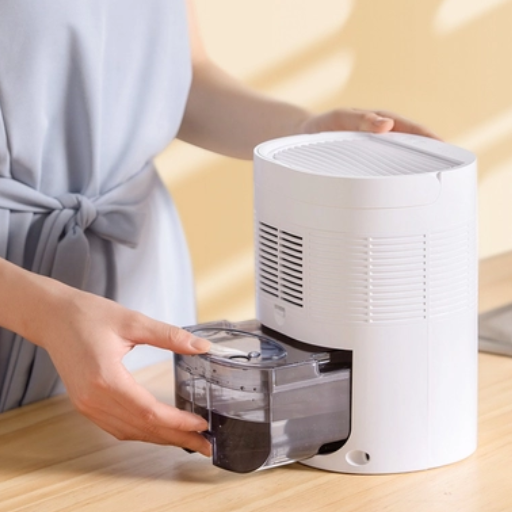
Using a dehumidifier with a pump or continuous drain offers notable convenience and efficiency. These features eliminate the need to manually empty the water tank, making them ideal for long-term or high-volume use. The pump allows water to be expelled vertically, even through windows or up to sinks, which is especially useful in basements or areas without floor drains. Continuous drain functionality directs collected moisture directly to a drain or outlet, ensuring uninterrupted operation. Both options save time and effort while maintaining consistent humidity control.
Advantages of a built-in pump for bathroom dehumidifiers
- Enhanced Water Removal Efficiency
A built-in pump significantly improves the efficiency of removing water collected by the dehumidifier. This feature allows moisture to be expelled vertically up to heights of 15 feet or more, making it suitable for bathrooms located in basements or without easy access to a floor drain.
- Convenient Automatic Drainage
With a built-in pump, the dehumidifier can continuously drain accumulated water, eliminating the need for frequent manual emptying of the water tank. This is particularly beneficial for humid environments where moisture collection is rapid and consistent.
- Versatility in Placement
The pump allows for flexible placement of the dehumidifier, as it can transport water to remote drainage locations, such as sinks, windows, or dedicated drainage lines. This is ideal for bathrooms with limited drainage options.
- Time-Saving Operation
Continuous drainage through the pump reduces time spent monitoring and maintaining the device, allowing users to enjoy maximum convenience without worrying about interruptions caused by a full water tank.
- Reduced Risk of Overflow
The automated drainage functionality prevents water overflow, which can occur when a tank reaches capacity. This ensures that the dehumidifier operates smoothly without damaging nearby surfaces or flooring.
- Ideal for High-Humidity Areas
Bathrooms often experience significant moisture accumulation from daily showers and baths. A built-in pump empowers the dehumidifier to tackle these high levels of humidity effectively, ensuring healthier, more comfortable indoor air quality.
- Long-Term Durability and Performance
Devices equipped with built-in pumps are designed for prolonged and consistent use. The automatic features reduce strain on the user while maintaining high performance, making them a reliable choice for high-usage spaces like bathrooms.
By incorporating a built-in pump, bathroom dehumidifiers provide unmatched convenience, efficiency, and flexibility, making them an ideal solution for maintaining a dry and comfortable environment.
Exploring the convenience of continuous drainage
Continuous drainage enhances the efficiency and convenience of modern dehumidifiers, eliminating the need for frequent manual water tank emptying. By connecting the dehumidifier to a drain hose, users enable the unit to operate without interruption, effortlessly expelling collected moisture. This feature is particularly beneficial in high-humidity environments like basements, laundry rooms, or large bathrooms, where moisture levels can accumulate rapidly.
Recent advancements in dehumidifier technology have optimized continuous drainage systems. Many devices are now equipped with user-friendly attachments for seamless setup, including hose compatibility and secure outlet points. Studies have shown that dehumidifiers capable of continuous drainage can tackle up to 50 pints of moisture per day on average, depending on the model, allowing them to maintain a healthy humidity level below 60%. Such consistent performance reduces the likelihood of mold and mildew growth, improves air quality, and preserves household materials like wood and fabrics.
Additionally, continuous drainage systems minimize maintenance requirements, making them an ideal choice for busier households or commercial spaces. This capability supports uninterrupted operations and is particularly advantageous in spaces that require constant humidity control, further emphasizing its role in creating optimal living conditions.
Comparing water tank capacity and drain hose options
Water tank capacity determines storage volume, while drain hose options affect water flow rate and ease of use.
| Parameter | Water Tank | Drain Hose |
|---|---|---|
|
Purpose |
Storage |
Water flow |
|
Capacity |
Varies by size |
Affects speed |
|
Material |
Steel, plastic |
Rubber, PVC |
|
Maintenance |
Cleaning needed |
Replaceable |
|
Usage |
Long-term storage |
Quick draining |
Can a mini dehumidifier effectively manage high humidity?
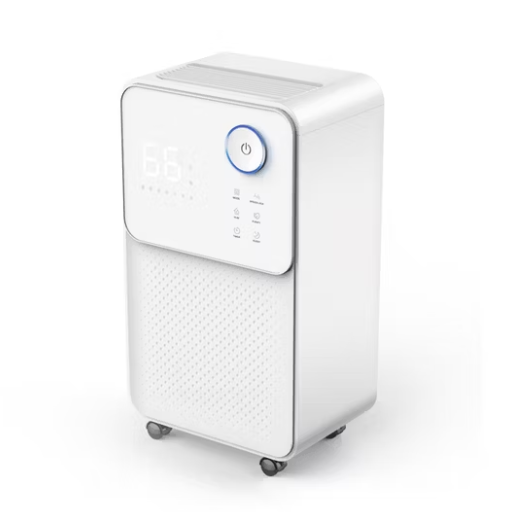
While mini dehumidifiers are helpful for small, confined spaces, they are typically not powerful enough to manage high humidity in larger areas. These devices are designed for light-duty use, targeting specific zones like closets, bathrooms, or small bedrooms. For spaces with significantly high humidity levels, larger, more robust dehumidifiers are necessary to ensure effective moisture control and prevent potential issues such as mold growth or damage to belongings.
Evaluating pints of moisture removal capacity
When evaluating pints of moisture removal capacity, I look at the size of the space and the level of humidity I need to manage. For smaller, less humid areas, a device that can remove around 20–30 pints of moisture per day is sufficient. However, for larger spaces or areas with extreme humidity levels, I choose a unit with at least 50 pints of removal capacity to ensure effective performance and prevent problems like mold or dampness.
Understanding the limitations of small dehumidifiers
Small dehumidifiers are often praised for their portability and affordability, but it’s crucial to understand their limitations before making a choice. One major constraint is their reduced capacity—typically designed to remove around 20-30 pints of moisture per day. While this range may suffice for compact spaces like bedrooms, laundry rooms, or storage areas, it may fall short in larger or excessively damp environments. Additionally, small dehumidifiers usually have smaller water tanks, meaning they require more frequent emptying, which can be inconvenient for continuous operation.
Another factor to consider is their energy efficiency. While these devices are often marketed as energy-saving solutions, their performance in high-humidity conditions may demand prolonged operation, slightly reducing their energy-efficiency benefits. Noise levels can also be a drawback—since most small units lack advanced noise-reduction systems, they might emit noticeable sound during operation. Furthermore, small dehumidifiers typically have limited air circulation capacity, which makes them less effective in reaching and dehumidifying larger areas evenly. When selecting a dehumidifier, it’s essential to evaluate these factors alongside room size and humidity needs to ensure optimal performance and long-term satisfaction.
The role of ventilation in humidity control
Proper ventilation plays a crucial role in controlling indoor humidity levels, contributing to a healthier and more comfortable living environment. Effective ventilation systems promote the exchange of indoor and outdoor air, which helps to regulate moisture levels and prevent issues such as mold growth, condensation, and musty odors. According to environmental experts, maintaining relative indoor humidity between 30% and 50% is ideal for reducing allergens and ensuring structural integrity.
Mechanical ventilation systems, like exhaust fans and whole-house ventilation, can significantly aid in removing excess moisture from kitchens, bathrooms, and basements—where humidity levels typically run higher. Studies show that incorporating mechanical systems alongside natural ventilation—like opening windows or using adjustable vents—can enhance air exchange rates by as much as 40% in enclosed spaces. Furthermore, advanced ventilation technologies, such as energy recovery ventilators (ERVs), not only help manage moisture but also improve energy efficiency by reclaiming heat during air exchange.
For optimal humidity control, homeowners should also focus on routine maintenance, like cleaning ventilation filters and ensuring unobstructed airflow. Combined with appropriate dehumidification and insulation, a well-designed ventilation strategy can create a balanced indoor climate while minimizing the risks associated with excessive humidity.
How does a portable dehumidifier contribute to better air quality?
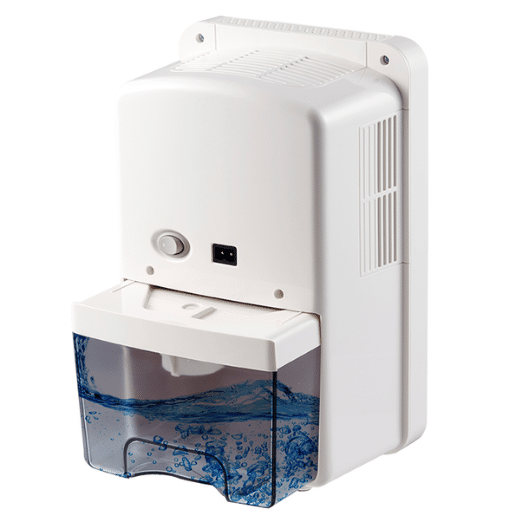
A portable dehumidifier improves air quality by reducing excess moisture in the air, which helps prevent the growth of mold, mildew, and dust mites—common triggers for allergies and respiratory issues. By maintaining optimal humidity levels, it creates a healthier living environment and minimizes musty odors often caused by damp conditions. Portable dehumidifiers are convenient and easy to move between rooms, making them an effective solution for targeting specific problem areas in a home.
Examining the link between mildew and air dehumidifiers
Air dehumidifiers play a pivotal role in combating mildew by addressing the primary condition that facilitates its growth—excessive humidity. Mildew thrives in environments with relative humidity levels above 60%, where moisture accumulates on surfaces such as walls, ceilings, and fabrics. By reducing indoor humidity to an optimal range of 30–50%, dehumidifiers effectively prevent these conditions, creating an environment where mildew cannot sustain itself.
Research indicates that prolonged exposure to mildew can affect indoor air quality and contribute to respiratory irritations, allergies, and other health concerns. Modern dehumidifiers often include built-in hygrometers to measure humidity levels, allowing users to actively monitor and maintain ideal environmental conditions. For example, studies highlight that in areas with consistent humidity control, the presence of mildew and related spores decreases significantly, positively impacting both structural preservation and occupant health.
These devices are particularly useful in high-risk spaces such as basements, bathrooms, or poorly ventilated areas, where dampness is most prevalent. The integration of advanced technology, such as smart humidity sensors and energy-efficient designs, further enhances the practicality of dehumidifiers for long-term mildew prevention.
The impact of air purifier features in dehumidification
Air purifiers, when integrated into dehumidifiers, play a significant role in enhancing indoor air quality, addressing both moisture and airborne pollutants simultaneously. Advanced filtration systems, such as HEPA filters, are particularly effective in trapping allergens, dust, and fine particles, ensuring cleaner air circulation. Data indicates that high-quality air purification can remove up to 99.97% of particles as small as 0.3 microns, including mold spores which thrive in humid environments.
Additionally, the inclusion of activated carbon filters complements dehumidification by neutralizing odors and chemical pollutants, further contributing to a healthier living space. Combined systems also streamline functionality by tackling two issues—humidity control and air purification—in one device, offering enhanced convenience and efficiency. These dual-function devices have been shown to reduce mold growth rates significantly while improving air quality metrics such as PM2.5 levels, making them an exceptional choice for those prioritizing both comfort and health.
Maintaining relative humidity for health and comfort
Maintaining relative humidity (RH) within the optimal range is crucial for both health and overall comfort. Experts recommend keeping indoor RH levels between 30% and 50%. When humidity drops below 30%, the air can become excessively dry, leading to issues such as dry skin, irritated eyes, and respiratory discomfort. Conversely, RH levels exceeding 50% can create an environment conducive to mold growth, dust mites, and bacteria, which may trigger allergies and other respiratory issues.
Proper humidity control also helps regulate thermal comfort. When RH levels are too high, the air feels warmer than it actually is, leading to potential discomfort and greater reliance on cooling systems during warmer months. On the other hand, very dry air may make indoor spaces feel colder and increase heating costs during winter. For example, studies have shown that optimal RH can reduce energy expenditures by minimizing overuse of HVAC systems while safeguarding occupants’ health.
Notably, relative humidity also impacts indoor air quality (IAQ). High moisture levels exacerbate the spread of airborne pollutants, such as volatile organic compounds (VOCs) and particulate matter. By controlling moisture, individuals can mitigate these health risks. Devices such as dehumidifiers or combined air purification and dehumidification systems are particularly effective, as they reduce excess moisture while simultaneously capturing contaminants. Comprehensive solutions like these help to create balanced, healthy, and comfortable indoor environments year-round.
Reference Sources
-
Texas A&M University – Eliminating Humidity and Condensation Problems in University Dormitories
- This case study explores solutions for high humidity and condensation issues, including dehumidification strategies.
- Texas A&M Repository
-
University of Central Florida – Residential Performance Code Methodology for Crediting Dehumidification
- This report discusses dehumidification strategies and their integration into residential energy codes.
- UCF Repository
-
Massachusetts Institute of Technology – A Global Strategy for Humidification-Dehumidification Technology
- This thesis examines humidification-dehumidification technology and its applications, including water management.
- MIT Repository
Frequently Asked Questions (FAQs)
Q: Why do I need a dehumidifier in my bathroom?
A: Bathrooms are often humid environments due to showers and baths, which can lead to excess moisture. This makes them a breeding ground for mold and mildew. A dehumidifier helps in removing moisture from the air, thus reducing humidity in your bathroom and preventing mold growth.
Q: What is the best dehumidifier for small rooms like bathrooms?
A: For small rooms, a compact or small dehumidifier for home use is ideal. Models like the Eva-Dry or Midea are popular choices as they effectively manage humidity in small spaces without occupying much space.
Q: Can a desiccant dehumidifier be used in a bathroom?
A: Yes, a desiccant dehumidifier can be used in a bathroom. These units are excellent for cooler environments and are effective in removing moisture from the air without using a compressor, making them quieter than traditional electric dehumidifiers.
Q: How does a 50-pint dehumidifier differ from a small dehumidifier for home?
A: A 50-pint dehumidifier is designed for large rooms and can remove more water from the air, making it suitable for spaces with high humidity levels. In contrast, a small dehumidifier for home is more suited for small rooms or bathrooms with lower humidity levels.
Q: What features should I look for in the best dehumidifiers for bathrooms?
A: Key features to look for include a compact size, low noise level (measured in decibels), ease of use, and possibly a sleep mode for quieter operation. A continuous drain option or a drainage hose can also be beneficial for convenience.
Q: Is it necessary to use a drainage hose for a dehumidifier in your bathroom?
A: While not necessary, a drainage hose can be convenient for continuous operation, as it allows the water collected to be drained directly into a sink or drain, eliminating the need to frequently empty the water tank.
Q: Are there specific dehumidifiers for basements that can be used in bathrooms?
A: Yes, many dehumidifiers for basements can also be used in bathrooms, especially if your bathroom is particularly humid. These units are designed to handle larger volumes of moisture, making them effective in very damp environments.
Q: Can using a dehumidifier save on heating costs in a bathroom?
A: By reducing humidity in the room, a dehumidifier can make the air feel warmer, potentially allowing you to lower your thermostat and save on heating costs. However, the primary purpose of a dehumidifier is to control moisture, not to provide heat.
Q: How can I ensure my dehumidifier works efficiently in my bathroom?
A: To ensure efficiency, keep the bathroom door closed to contain the humidity and regularly clean the filter. Additionally, set your desired humidity level based on the room’s requirements, usually between 30-50%.
Q: What are the advantages of an electric dehumidifier over other types?
A: Electric dehumidifiers are powerful and can quickly reduce high levels of humidity, making them suitable for both small and large room applications. They are efficient in removing large quantities of water from the air and are available in various sizes to fit different room needs.

